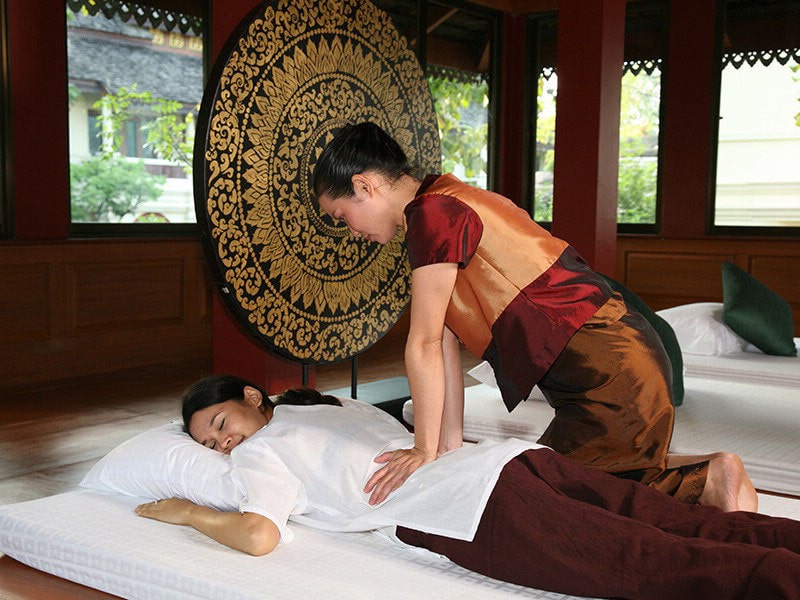
Perhaps you have asked yourself more than once where natural medicine comes from, and more specifically certain disciplines such as Phytotherapy. The ancestral science that uses medicinal plants for health care is called phytotherapy and you would like to know what its benefits are for your health and how it complements traditional medicine.
But also to have a wider vision, to enter in its historical legacy and to discover the first civilizations that knew to see the therapeutic use of some plants by their medicinal virtues. This post brings you closer to it.
From its birth to its use in the 21st century.
What do we know about this natural science that derives from the Greek “Phuton”, plant, and “Therapeia”, treatment? Talking about phytotherapy also means talking about other special branches integrated in it, such as aromatherapy, based on essential oils. And of those other alternative therapies that can be its great allies to increase our health, like the Thai massage.
During the Renaissance Phytotherapy lived a golden age and the first herbariums were born. The definition of the term phytotherapy as we understand it today began to be used around 1865 by Dr. Auguste Soins, officially calling it the therapy that uses medicinal plants for health.
At the beginning of the 20th century, Dr. Henri Leclerc was responsible for popularizing the term among the scientific and medical community. However, it is no less true to say that this science is as old as humanity itself and the appearance of different civilizations and cultures throughout history.
Ever since man has existed, he has always known how to resort to vegetal means within his reach to alleviate his ailments, almost in an intuitive manner and with a vision closely linked to magical rites and the figure of the shaman and the healer. And this empirical experience on medicinal plants allowed to give way to its later scientific study.
With the Egyptian culture the Phytotherapy reached a more rational vision, as it is demonstrated by the discovery of documents that corroborated the domain and knowledge of these plants. On one hand the Ebbers papyrus (1500 BC) and on the other the Kaun papyrus (1900 BC). In traditional Chinese medicine and in Indian culture this science also played an important role.
The Emperor’s book on internal medicine, which is over 3,000 years old, already contained a collection of medicinal plants and their therapeutic applications, and is still considered a valuable reference manual today. And in India, the medical principles of Ayurveda cannot be explained without the use of medicinal plants in its holistic conception of health.
Similarly, Greek culture benefited from the knowledge of medicinal plants inherited from the Egyptian people. So much so, that it seems that it was in Greece that the first book dedicated to this family and its effects was born, the work of the doctor Dioscorides. And Hippocrates mentioned numerous medicinal plants in his treatises as recommendations to combat certain reactions produced with food in people.
The golden age of this science
Phytotherapy has always been understood as a science linked to natural medicine, which also experienced a golden age, closely associated with the arrival of the printing press during the Renaissance. The texts on this ancestral science began to proliferate, compiling studies and treatments on medicinal plants.
The first herbariums also appeared, conceived as collections of varieties for botanical studies. Later, the birth of experimental botany and the study of plant physiology led to an increase in plants with purely therapeutic uses.
It was in the 19th century that the active principles in plants for curative and health benefits were definitively confirmed, thanks to the development of chemistry, physics and physiology. On the other hand, the industrial revolution brought the preparation of the first medicines, and the appearance of the pharmacists, the main ones in charge of manipulating their leaves and stems.

Halfway between natural and traditional medicine
Infusions, essential oils, natural creams, capsules, etc. Phytotherapy can be integrated into our daily lives in different ways, and we will have to wait until the beginning of the 20th century to understand it as it is interpreted today: the treatment and prevention of illnesses using plants and vegetable substances.
- ITS ROLE IN NATURAL MEDICINE
It is true that Phytotherapy has always been closely linked to natural medicine, as one of the disciplines that fall under it. In fact, what we call alternative therapies leads us to discover a wide range of health practices capable of providing us with well-being and greatly improving our health with an alternative approach to conventional medical treatments.
- ITS ROLE IN TRADITIONAL MEDICINE.
However, this science also has a place in the so-called conventional medicine, most of the times as a parallel treatment to it, suitable to be used together and respectfully. Even sometimes as effective methods to counteract side effects with chemotherapy.
However, medicinal plants must be administered and delivered safely by health professionals. Although their side effects are less than those of synthetic drugs, they are not harmless, hence the importance of approaching them with full guarantees.
These natural herbal drugs are also medicines and therefore should be supplied in pharmacies or specialized centers if they are moderate ailments. And if they are more serious conditions, they will probably need a doctor’s prescription, as well as knowing if the person is taking another kind of medication and knowing what their medical history is.
The therapeutic keys to phytotherapy
The Egyptian culture already spoke of phytotherapy in their papyrus to extol its medicinal virtues. Therefore, phytotherapy can be a new ally to take care of our health with a more natural philosophy to prevent, treat, reduce or combat common ailments and discomforts, experienced on a regular basis and that reduce our quality of life.
Its treatments are of great help to work on the symptoms of practically any disease, although it is true that with a more holistic concept of health, since it always looks for the cause of the ailment and then the most propitious remedy.
The main medicinal virtues
The medicinal plants of Phytotherapy mitigate symptoms of stress, promote relaxation, combat insomnia and other ailments. The benefits that are possible to experience when we rely on Phytotherapy are varied and most act on fairly common ailments.
Using their medicinal plants can help us to mitigate symptoms of stress and anxiety, combat states of insomnia, promote relaxation, reduce digestive problems, high blood pressure, high cholesterol, etc.
Phytotherapy is also one of the alternative therapies to be considered as a treatment capable of relieving other symptoms, such as fever, sore throat, muscle and joint pain and coughing fits. Although the toxicity problems associated with these plants are very low, we must not forget that we must think of them as a medical treatment, even if it is alternative or complementary.
It is therefore important to respect the recommended quantities and to inform a medical professional when starting to use them. The main reason is that some plant varieties can reduce the action of certain synthetic drugs, including anticoagulants. Conversely, others are likely to increase their effects inadequately.
Thai massage: a valuable complementary therapy to phytotherapy
Other alternative therapies, such as Thai massage, can be an effective complementary treatment to phytotherapy. In search of the right balance. Specifically, the so-called body manipulation therapies are the best experience to appreciate the benefits of massage on the mind, as it happens with the Thai massage.
Another avenue to explore to approach natural medicine is our generic seminars and workshops of our school of alternative therapies in Madrid, mainly oriental. They are perfect to live a more academic approach on millenary techniques that promote the physical and mental well-being of the individual.

